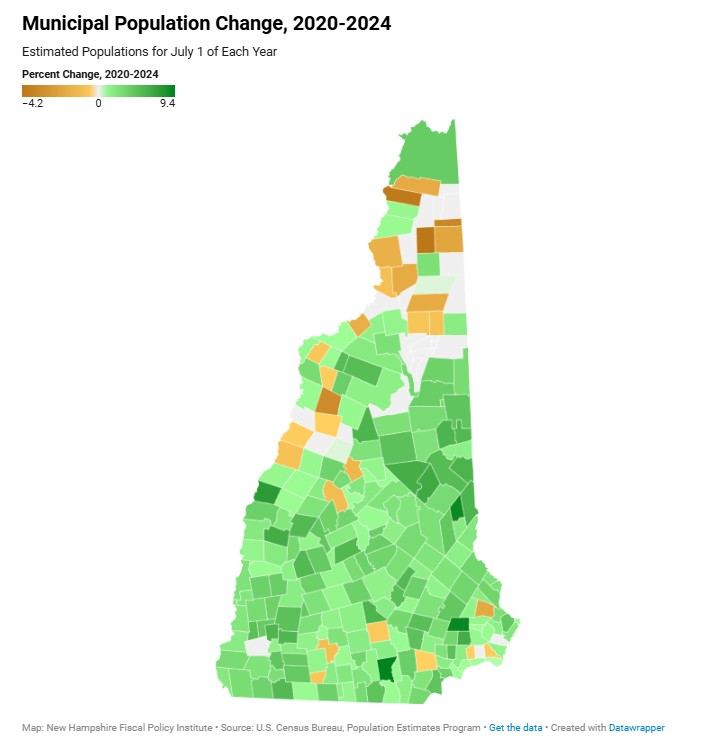
"Carroll County led the state in growth, with towns like Brookfield (+8.9%), Tuftonboro (+6.6%), and Moultonborough (+6.2%) far outpacing the state average, indicating a trend of population movement towards amenity-rich areas."
"Some municipalities, including Durham, Berlin, and Keene, lost population, highlighting a troubling aspect of the growth patterns amid the overall state increase."
"Southeastern counties remain home to nearly three-quarters of the state's population, underscoring their central role in New Hampshire's economy and workforce despite uneven growth."
"Challenges like high housing costs, limited childcare, and affordability barriers may be contributing factors to the population declines observed in certain communities."
Between 2020 and 2024, New Hampshire's population increased by 30,300, but the growth was uneven across regions. Areas such as Carroll County experienced significant growth, while cities like Berlin, Keene, and Durham faced population declines. Remote work and retirement have driven people towards amenity-rich locations in the Lakes Region and White Mountains. Southeastern counties house the majority of the population, playing a crucial role in the state's economy. Issues such as high housing costs and limited childcare may hinder growth in other regions.
Read at InDepthNH.org
Unable to calculate read time
Collection
[
|
...
]